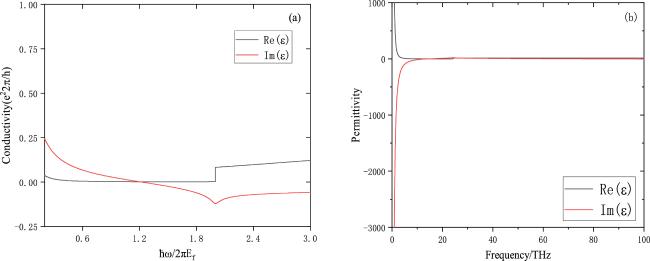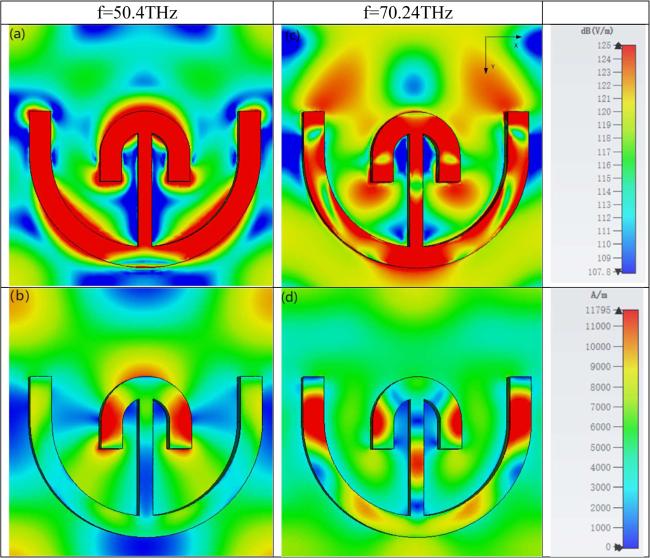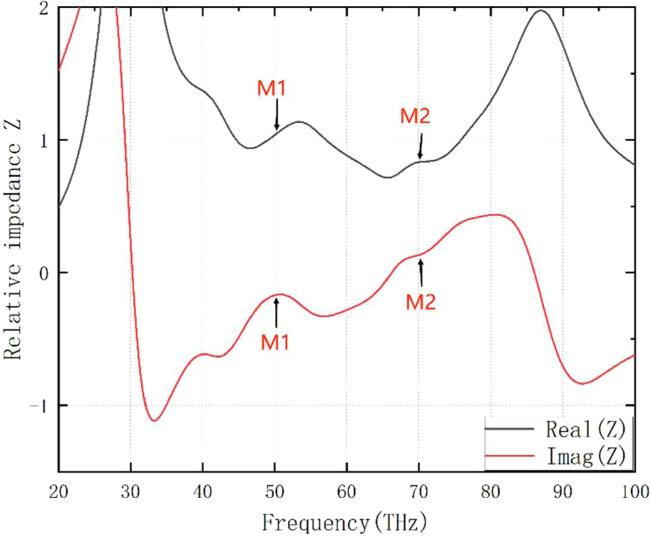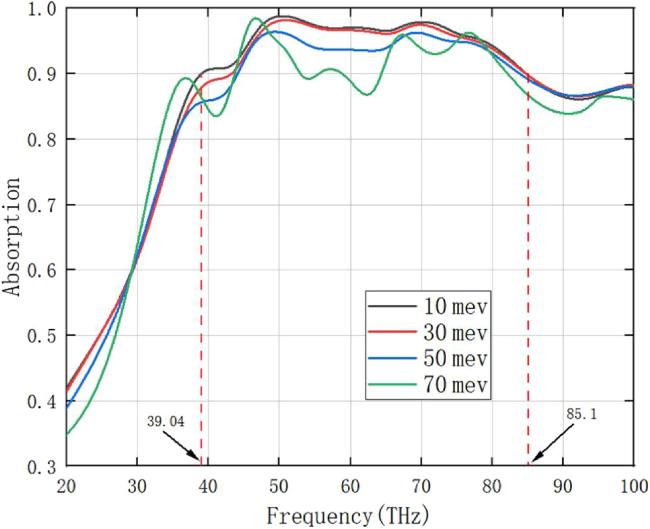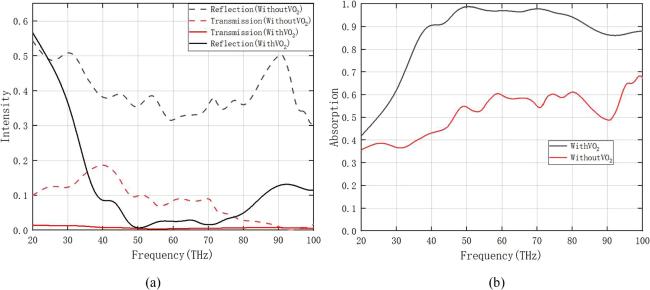Metamaterials have become a hot topic in research into wave-absorbing materials in recent years due to their perfect wave-absorbing properties, but conventional metamaterial absorbers are passive wave absorbers that have the disadvantage that their wave-absorbing properties cannot be changed once they are prepared and moulded. Therefore, tunable metamaterial absorbers have gradually become one of the main directions of research in various fields [
1,
2]. Tunable materials are materials that can change their electromagnetic properties according to external excitation; common external excitations include externally applied voltage, laser light, etc. The external excitation changes the conductivity or dielectric constant and other electromagnetic parameters of the tunable material, while at the same time its topology does not change. These excellent characteristics of tunable materials make them particularly useful [
3]. Common tunable materials include graphene, vanadium dioxide (VO
2), photosensitive silicon and, especially, graphene, which has been a focus of research in the field of absorbers in recent years [
4–
6]. Graphene is a nanomaterial in which carbon atoms connected by sp
2 hybridisation are tightly packed into a single two-dimensional honeycomb lattice structure. The standard thickness of a single layer of graphene is only $0.334\,{\rm{nm}},$ with the thickest layer not exceeding $0.4\,{\rm{nm}}.$ Graphene’s unique physical structure gives it excellent optical, electrical and mechanical properties, and because the structure is a single layer of carbon atoms, graphene has superior electrical conductivity [
7,
8]. Although graphene has many excellent properties, it also has some disadvantages. For example, the inability to exist stably in an aerobic environment is a huge disadvantage of graphene: if it reacts with oxygen at high temperatures this will lead to the generation of graphene oxide, resulting in the destruction of its properties until it loses its conductive properties. Dirac semimetals have also attracted attention for their excellent optical properties [
9–
11] and were found to have a linear dispersion relation very similar to that of graphene. The electrons in them behave as zero-mass fermions, yielding unique optical, magnetic and transport properties, and they are therefore considered to be three-dimensional analogues of graphene. Dirac semimetallic films have the advantages of photosensitive two-dimensional materials and are less susceptible to dielectric interference; unlike graphene they have no excess surface electrons [
12,
13]. In addition, the carrier mobility in Dirac semimetal films can reach $9\times {10}^{6}\,{\mathrm{cm}}^{2}\,{{\rm{V}}}^{-1}\,{{\rm{s}}}^{-1},$ which is much higher than the best value for graphene. Remarkably, their conductivity can be dynamically altered by alkaline surface doping by changing the Fermi energy level. These properties ensure that the use of Dirac semimetallic materials for the design of terahertz absorbers has a variety of significant advantages, such as: flexible tunability and stable controllability, efficient terahertz absorption and wider bandwidth response [
14,
15]. These advantages of Dirac semimetals mean that they are increasingly being used in terahertz imaging and detection, terahertz communication systems, high-performance optoelectronic devices and other fields. Dirac semimetallic materials are of various types—topological Dirac semimetallic, three-dimensional Dirac semimetallic and two-dimensional Dirac semimetallic—and it is the topological Dirac semimetal Na
3Bi that is considered in this paper.




